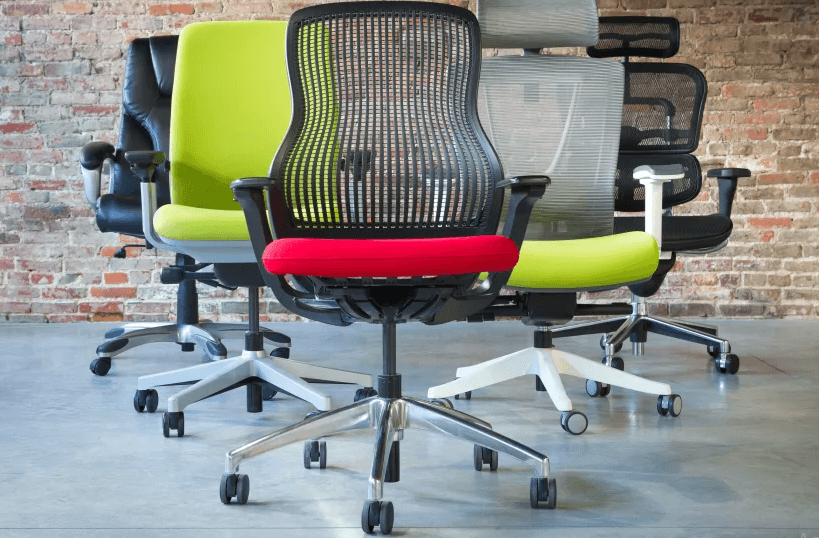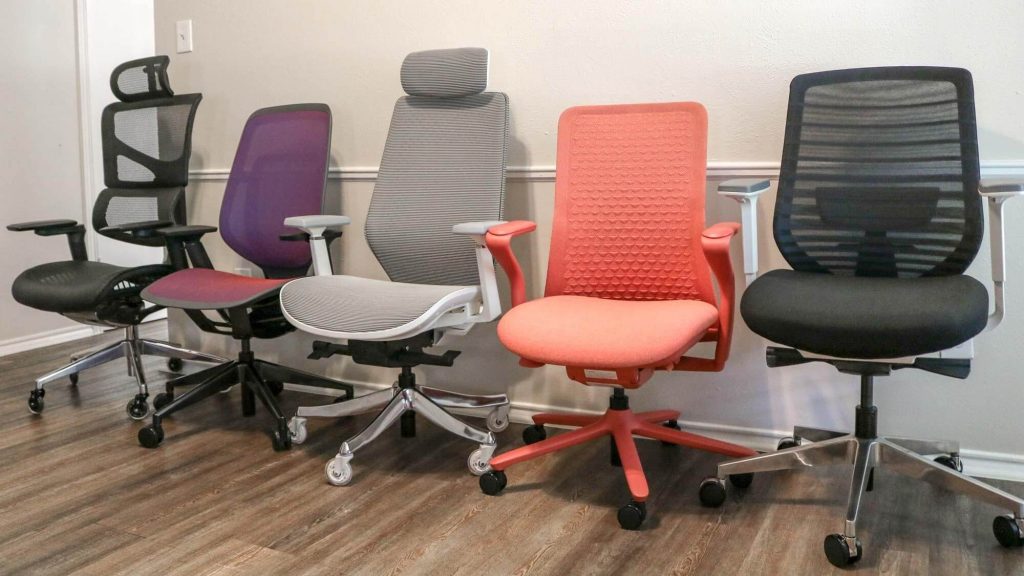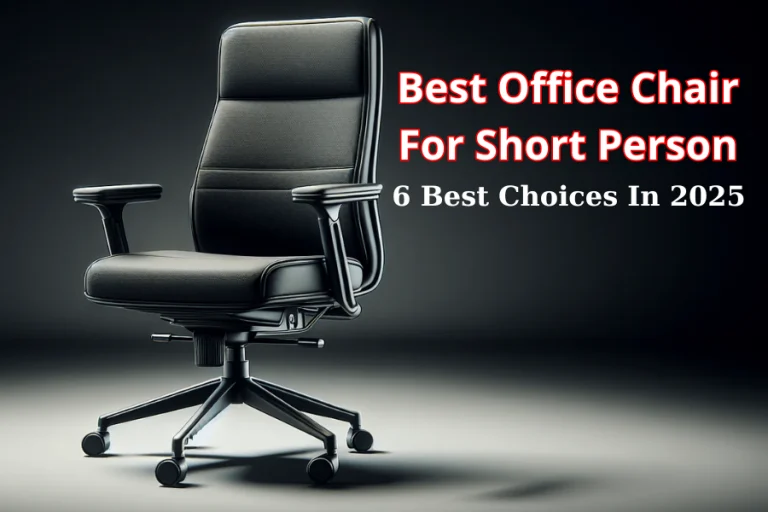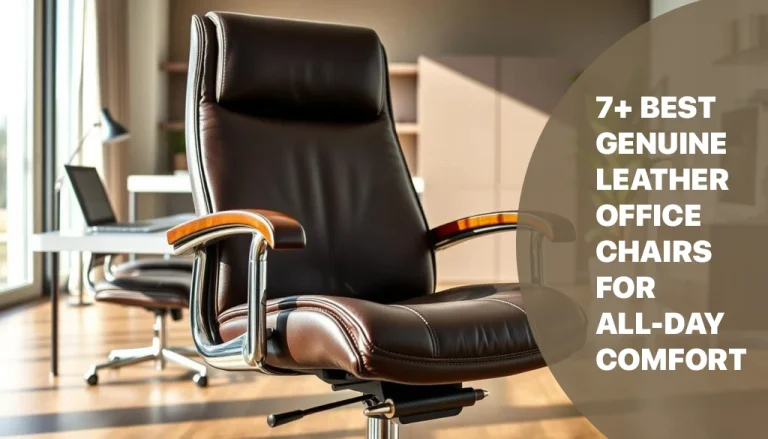Well, no matter how technology continues to evolve, there will always be a need for the best ergonomic office chair. Our goal is to take an intangible shopping application and help you make the best informed decision as if we were completing a personalized, onsite chair fitting (similar to what we practice in our Austin TX showroom).

Why Is Ergonomics Crucial in Office Chairs?
Ergonomics, a term derived from the Greek words “ergon” (work) and “nomos” (laws), refers to the science of designing and arranging products, systems, and environments to optimize human well-being and performance. In the realm of office furniture, especially chairs, ergonomics plays a pivotal role in ensuring comfort, reducing the risk of musculoskeletal disorders, and enhancing productivity.
The Science Behind Ergonomics and Its Importance
Ergonomics is not just a buzzword in the furniture industry; it’s a well-researched science that focuses on creating a harmonious interaction between humans and the objects they use. When it comes to office chairs, the principles of ergonomics are applied to ensure that the chair supports the natural posture of the spine, reduces strain on the back, neck, and shoulders, and provides comfort during prolonged periods of sitting.
- Natural Spine Support: Ergonomic chairs are designed to support the natural ‘S’ shape of the spine. This design prevents slumping and reduces stress on the spine and pelvis.
- Adjustability: A hallmark of ergonomic chairs is their adjustability. Features like adjustable height, armrests, and lumbar support allow users to customize the chair to their body type and work style.
- Reduced Muscle Strain: Proper ergonomics in a chair can significantly reduce muscle strain, especially in the lumbar region. This is crucial for individuals who spend long hours sitting at a desk.
Health Implications of Using Non-Ergonomic Chairs
While the benefits of ergonomic chairs are evident, it’s equally essential to understand the health implications of using chairs that don’t adhere to ergonomic principles.
- Back Pain: One of the most common complaints among office workers is back pain. Non-ergonomic chairs that don’t provide adequate lumbar support can lead to chronic back issues.
- Neck and Shoulder Strain: Chairs that are too high or too low can cause neck and shoulder strain, leading to issues like cervical spondylosis.
- Reduced Blood Circulation: Sitting in a poorly designed chair can impede blood circulation, leading to conditions like deep vein thrombosis.
- Decreased Productivity: Discomfort and pain can significantly hamper productivity. Employees might find it challenging to focus on tasks, leading to decreased efficiency and output.

What Key Features Should You Look For?
we’ve identified some key features that can make a significant difference in your overall sitting experience.
Understanding Adjustable Height, Lumbar Support, Armrests, and Swivel Capabilities
1. Adjustable Height:
The ideal ergonomic chair should allow users to adjust the seat height. This ensures that your feet rest flat on the ground, with your knees at a 90-degree angle, promoting better posture and reducing strain on the lower back.
2. Lumbar Support:
A crucial feature, lumbar support, ensures that the chair contours to the natural curve of your spine. This support reduces the risk of lower back pain and promotes a healthy sitting posture.
3. Adjustable Armrests:
Armrests should not just be a mere addition but should be adjustable in height and width. They should provide support to the arms, reducing strain on the shoulders and neck.
4. Swivel and Movement:
An ergonomic chair should offer the ability to swivel, allowing users to access different parts of their workstation without having to strain or stretch.
The Role of Materials and Cushioning in Comfort
1. Breathable Materials:
The material of the chair plays a significant role in comfort. Mesh back chairs, for instance, offer better ventilation, ensuring that you remain cool even after prolonged sitting.
2. Cushioning:
While a soft chair might seem comfortable initially, it’s essential to have the right amount of cushioning that provides support without being too soft. Memory foam is a popular choice as it contours to the body, offering optimal support.
3. Durability:
The material should not only be comfortable but also durable. Chairs made of high-quality materials ensure longevity and reduce the need for frequent replacements.
| Feature | Ergonomic Chair | Non-Ergonomic Chair |
|---|---|---|
| Lumbar Support | Yes | No |
| Adjustability | High | Low |
| Price | Higher | Lower |
| Health Benefits | Significant | Minimal |
Which Brands Lead the Market in Ergonomic Design?
In the ever-evolving world of office furniture, certain brands have carved a niche for themselves, especially when it comes to ergonomic design. These brands have consistently delivered products that prioritize user comfort, health, and productivity.
A Look into Popular Brands
1. Varidesk:
Varidesk has been a game-changer in the realm of office ergonomics. Known for their sit-stand desks, they’ve also ventured into ergonomic chairs that complement their desks perfectly. Their chairs are designed with dynamic support, ensuring that users maintain a healthy posture regardless of how they sit.
2. Herman Miller:
A brand that needs little introduction, Herman Miller is synonymous with quality and innovation in the office furniture industry. Their Aeron chair, for instance, has become an iconic representation of ergonomic design, offering a blend of aesthetics and functionality.
3. Steelcase:
Another titan in the industry, Steelcase offers a range of ergonomic chairs that cater to diverse needs. Their Gesture chair, designed after studying the posture of people working on devices, is a testament to their commitment to ergonomic excellence.
What Makes These Brands Stand Out?
- Research-Driven Design: All three brands invest heavily in research to understand user needs and design chairs that address specific pain points.
- Customizability: From adjustable armrests to seat depth, these brands offer chairs that can be tailored to individual preferences.
- Durability: High-quality materials and construction ensure that chairs from these brands stand the test of time.
- Aesthetics: Beyond functionality, these brands also prioritize aesthetics, ensuring that their chairs are not just comfortable but also visually appealing.
| Feature | Varidesk | Herman Miller | Steelcase |
|---|---|---|---|
| Lumbar Support | Yes | Yes | Yes |
| Adjustability | High | High | High |
| Material Quality | Premium | Premium | Premium |
| Price Range | Mid-High | High | Mid-High |
How to Properly Adjust and Use an Ergonomic Chair?
Investing in an ergonomic chair is only half the battle won. The real challenge lies in adjusting it correctly to reap its full benefits. Properly adjusted ergonomic chairs can significantly improve posture, reduce back pain, and enhance overall productivity. As we’ve spent considerable time researching and testing various ergonomic chairs, we’re here to guide you through the process of adjusting and using them to their fullest potential.
Tips and Tricks for Maximizing the Benefits of Ergonomic Chairs
1. Seat Height:
Begin by adjusting the seat height. Your feet should rest flat on the ground, with your knees forming a 90-degree angle. This position ensures optimal blood flow and reduces strain on the legs.
2. Lumbar Support:
The lumbar support should snugly fit the curve of your lower back. Adjust it to a position where it provides maximum support, reducing the risk of back pain.
3. Armrests:
Ensure that the armrests are at a height where your arms rest comfortably, forming a 90-degree angle at the elbows. This position reduces strain on the shoulders and neck.
4. Seat Depth:
Your thighs should be parallel to the ground, with a gap of about two to three fingers between the back of your knees and the chair’s seat edge.
5. Backrest Tilt:
Adjust the backrest tilt to support your natural spine curve. Some chairs offer a recline feature, which can be beneficial during short breaks to relieve pressure.
Common Mistakes to Avoid
- Not Adjusting Regularly: Your needs might change based on the task at hand. For instance, when typing, you might prefer a more upright position, while reading might require a slight recline.
- Ignoring Armrests: While they might seem insignificant, armrests play a crucial role in reducing shoulder and neck strain.
- Overlooking Material and Cushioning: A chair’s material can impact comfort. For instance, mesh offers better ventilation, while leather might provide a more luxurious feel
| Feature | Importance | Tips |
|---|---|---|
| Seat Height | Ensures proper leg posture | Feet flat, 90-degree knee angle |
| Lumbar Support | Supports lower back | Align with spine curve |
| Armrests | Reduces shoulder strain | 90-degree elbow angle |
| Seat Depth | Comfort for thighs | 2-3 finger gap from knee edge |
| Backrest Tilt | Supports spine | Adjust to task needs |
Final Thoughts
In the quest for the ideal ergonomic office chair, one question remains paramount: Is the investment truly worthwhile? From our extensive research and experience, the answer is a resounding yes. Ergonomic chairs offer unparalleled health benefits, from promoting better posture to reducing the risk of musculoskeletal issues. While the initial cost might seem steep, the long-term health advantages and the boost in productivity make it a cost-effective choice. For anyone spending significant hours at a desk, an ergonomic chair isn’t just a comfort accessory; it’s a vital tool for overall well-being and efficiency.





